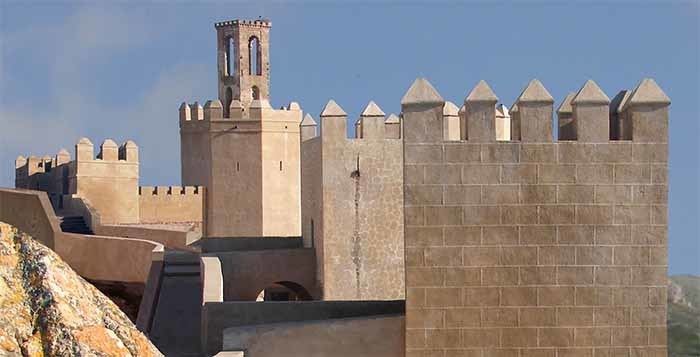Government Monarchy Downfall of Caliphate of Córdoba 1009 | Founded 1009 | |
 | ||
Languages Andalusi Arabic, Mozarabic , Ladino Religion Islam, Roman Catholicism, Judaism | ||
The Taifa of Badajoz (from Arabic: طائفة بطليوس) was a medieval Muslim kingdom in what is now parts of Portugal and Spain and centred on the city of Badajoz which exists today as the first city of Extremadura, in Spain.
Contents
History
The taifa of Badajoz rose, like the other taifa kingdoms of the Iberian Peninsula, after the fragmentation of al-Andalus (the Caliphate of Cordoba) in the late 10th and early 11th centuries. It was created by Sabur, a former slave of perhaps Slavic origin. The taifa's control extended over most of ancient Lusitania, including Mérida and Lisbon. Sabur was succeeded in 1022 by his vizier, Abdallah ibn al-Aftas, who founded the Aftasid dynasty. Sabur's sons fled to Lisbon, where they created the short-lived taifa of Lisbon, which was soon reconquered by Badajoz. In 1055 Badajoz became a tributary of the Kingdom of León-Castile, losing significant parts of its territory south of the Mondego river (south of Coimbra). The Abbadids of Seville also conquered parts of their territory.
After the death of Abdallah's son, Abu Bakr, a civil war broke out between the latter's sons, Yahya and Abu, the former being victorious. His troops fought alongside the Almoravids against the Christian army in the Battle of Sagrajas (1086), which occurred not far from Badajoz. However, after the Almoravid victory, Yahya, who feared their increasing power, allied with Alfonso VI of Castile. In 1094 the Almoravids occupied Badajoz and Yahya was killed together with two of his sons. A surviving son fled first to Montánchez and then to Alfonso's court.
After the taifa's original territory had been controlled by various kingdoms (Almoravids, Almohads, Portugal) in succession, a second independent taifa was briefly recreated in Badajoz, existing from 1144 to 1151, when it fell again under Almohad dominion.
1st Taifa period (11th Century))
Banu Sabur (Saqlabi)
Banu Aftas (Berber)
2nd Taifa period (12th century)
Banu Wazir
Banu Hayy
